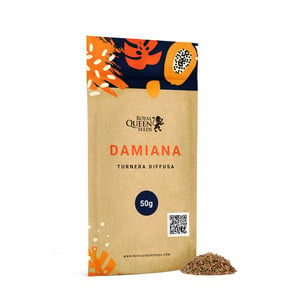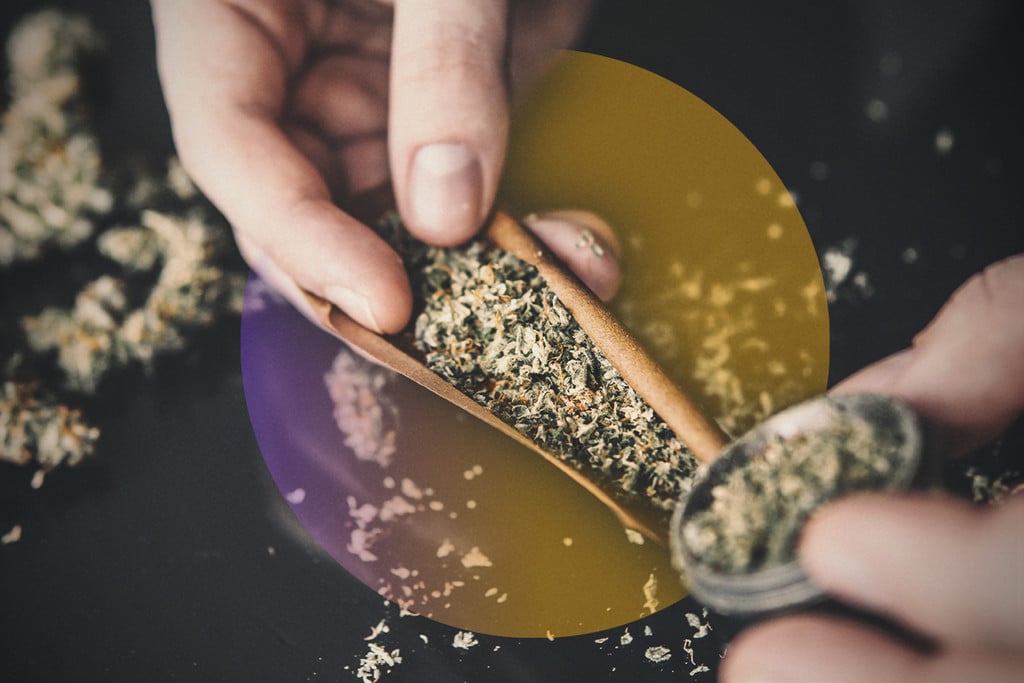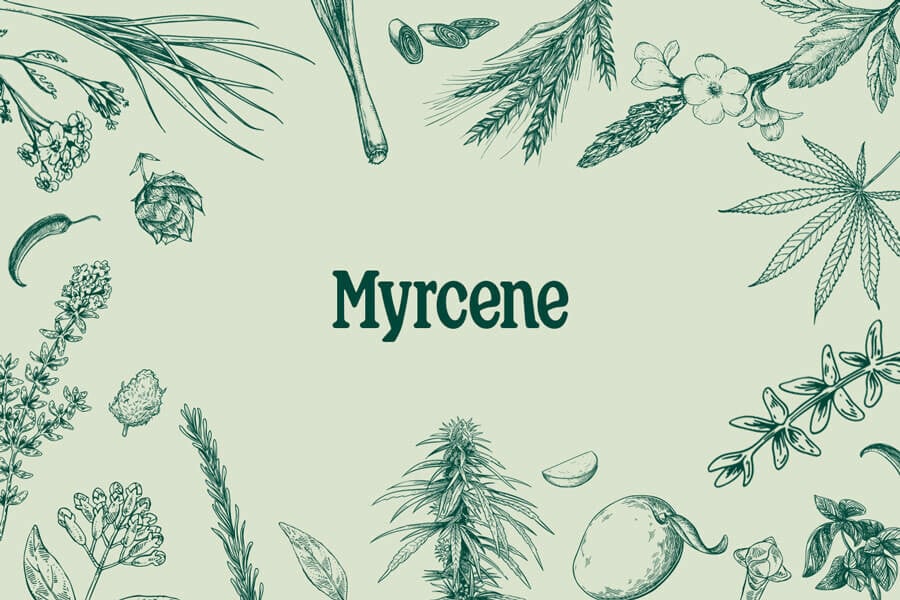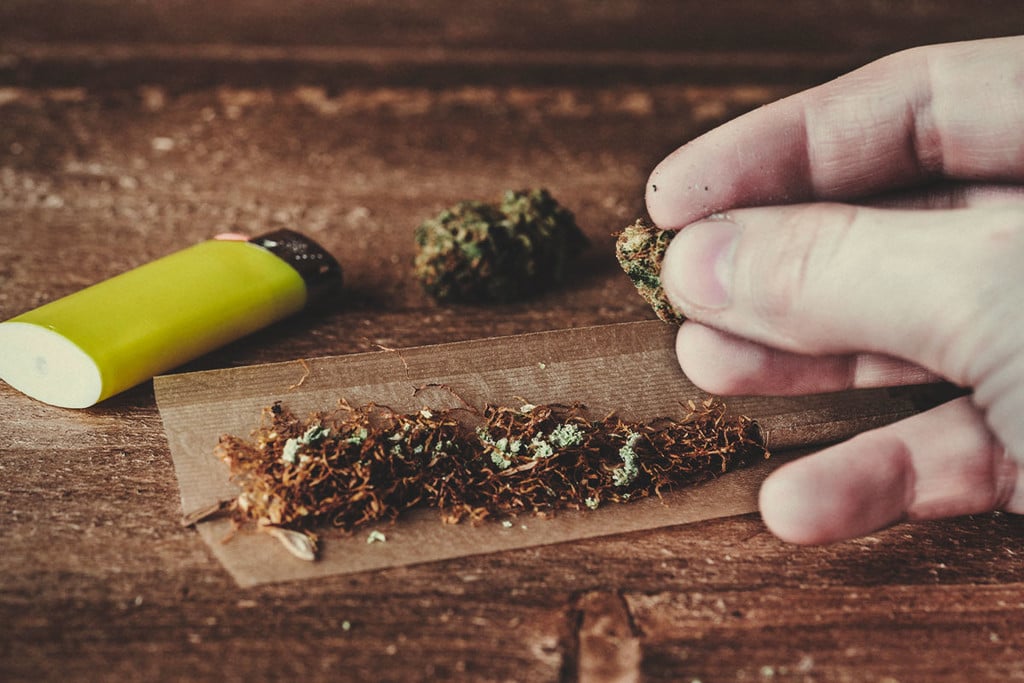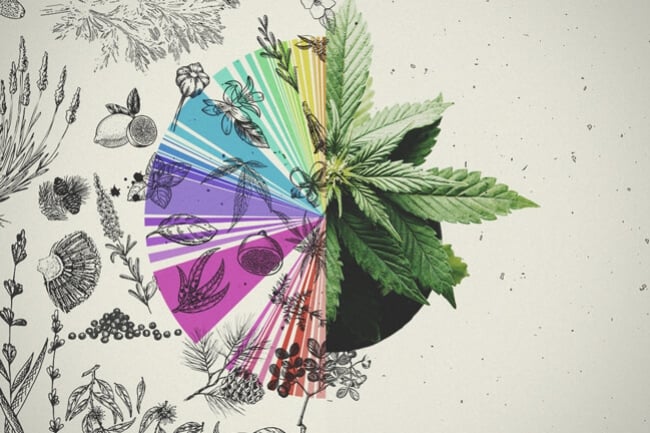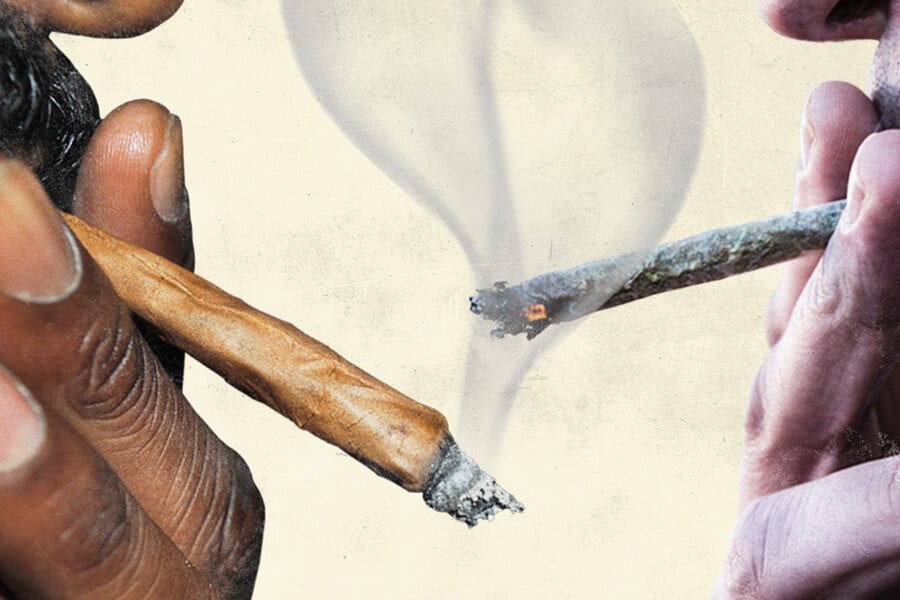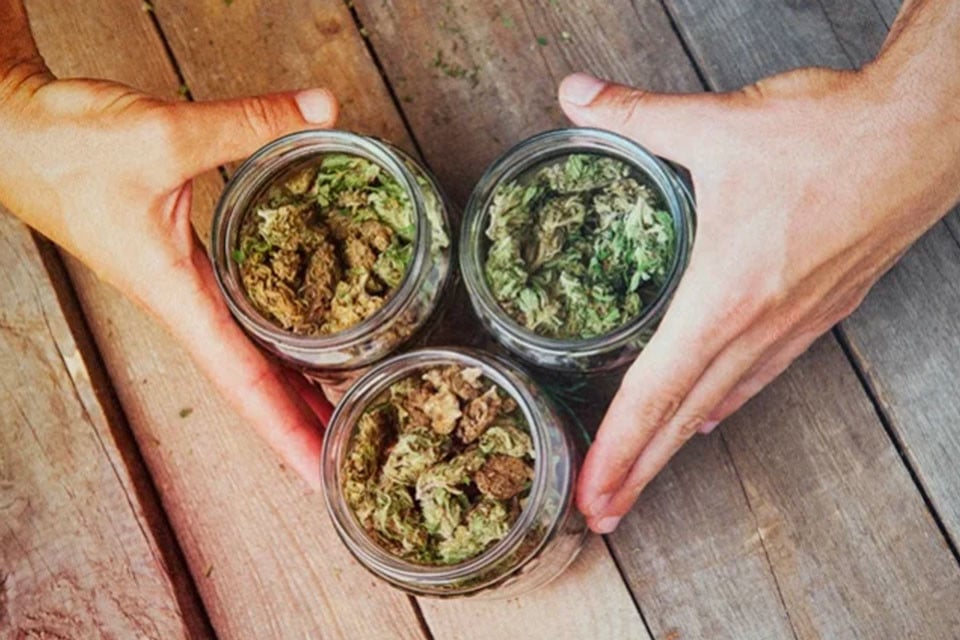.
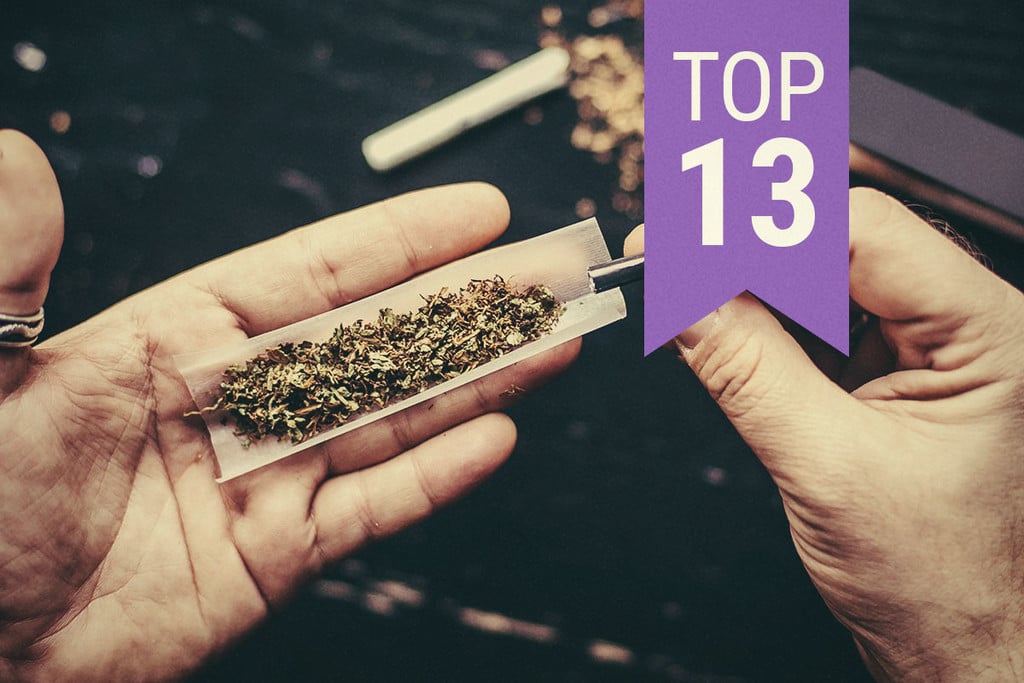
Top 13 Tobacco Replacements
Why limit your spliffs to tobacco? Sure, the plant helps spliffs to burn slowly, but the benefits end there. These 13 herbs also support an even burn, but add their own unique effects and flavours into the mix. Enhance your spliffs with herbs that relax the mind, soothe the body, and add some psychoactive effects of their own.
Contents:
Do you know the difference between a spliff and a joint? Whereas joints are rolled using only weed, spliffs contain tobacco. This addition helps the roll-up to burn evenly, fills out each cone, and comes along with a hit of nicotine.
While many European smokers enjoy adding tobacco to their cannabis, we all know the health dangers associated with this plant. Luckily, Mother Nature provides a banquet of smokable herbs, each with its own unique effects.
Of course, any kind of combustion produces tar and other nasty substances. But many herbs also contain beneficial terpenes and, if you buy organic, aren’t coated in pesticides and other damaging chemicals.
Check out the best smokable herbs below to use as tobacco alternatives in your spliffs. Read to the end to find out how to mix your own herbal blends.
1. DAMIANA
Damiana is an interesting herb with a rich history. It was originally utilised by the Aztecs as a remedy for impotence, and is reported to exhibit aphrodisiac effects and boost sexual drive and desire. Damiana is also used traditionally to treat headaches, depression, bedwetting, and constipation.
The herb is also associated with a mild psychoactive effect that is said to uplift the user, due to the presence of substances that may affect the nervous system and brain. Next time you fancy getting in the mood with your partner, sprinkle some dried damiana into a joint as a tobacco alternative.

2. KRATOM
Kratom, known by its scientific name Mitragyna speciosa, is a member of the coffee family that is native to Southeast Asia. The plant has garnered some serious attention over its ability to assist opioid users in cases of withdrawal. Kratom is known as an effective opioid substitute, meaning it may also be effective at managing chronic pain.
Kratom has been used traditionally for hundreds of years and played the role of a traditional medicine. The leaves are still chewed as a means to relieve pain and boost energy.
The effects brought on by kratom are dose-dependant. Lower doses of the plant, between 1–5g, cause stimulant effects that are felt within a timeframe of 10 minutes and last up to 90 minutes. These effects may lead to increased energy and alertness.
Moderate doses of the plant, between 5–15g, have opioid-like effects. The effects of doses of this size can last for multiple hours and may incite pain relief, a calm mental state, and a reduction of opioid withdrawal symptoms.
Kratom can be sprinkled into spliffs in a dose-dependant manner in order to achieve the desired effects. However, users should thoroughly research the plant beforehand to make sure it is compatible with any health conditions they have or any medications they are taking, as side effects and complications are possible and have been reported.

3. KANNA
Kanna, or Sceletium tortuosum, is an herb that is recognised for its abilities to boost mood and ease stress, tension, and anxiety. Doses on the lower end of the spectrum are reported to induce stimulation, whilst higher doses are associated with more sedating effects. This dose-dependant action makes kanna quite a flexible addition to a weed smoking session, with users able to adjust the effects depending on the occasion and all around mood of the setting.
Some users report that kanna boosts their confidence in social situations, so it may help to enhance conversations and decrease social anxiety. For this reason, it may also help to offset any anxiety associated with cannabis consumption. Although, kanna is said to enhance some of the effects of cannabis too.
Once again, be sure to research this plant before adding it to your spliffs, to make sure it is safe for you to consume as an individual. For example, the herb may temporarily increase blood pressure.

4. LAVENDER
This famous and therapeutic herb is easy to access and is found residing in many gardens across the world. The stunning scents derived from this species are in part due to the presence of the terpene linalool, also found in many different strains of cannabis. This terpene can add some truly delicious tastes to spliffs.
The role of lavender in a spliff goes far beyond just taste though; the so-called “entourage effect” makes it apparent that cannabinoids such as THC and CBD synergise with terpenes to boost the effects and alter the high.
Smoking lavender is reported to possibly assist with nervousness and insomnia, and can make for a smoother smoking experience.

5. ROSEMARY
Often found within many delicious culinary dishes, rosemary is another herb often found in gardens. As well as tasting delicious, rosemary is associated with improved cognition and memory due to the active constituents found within the plant. The herb may also assist with inflammation and immune system function.

6. HOPS
This herb is commonly found within a wide variety of beers, yet it can also play a part in spliffs too. Hops are actually part of the same plant family as cannabis. Hops contain the terpene myrcene, which is also found within numerous types of cannabis. This terpene is associated with both sedative and antidepressant effects, making it an enjoyable and complementary addition to a cannabis high.
Hops are reported to be dangerous when smoked at higher temperatures, so this herb is a better addition to vaping blends instead.

7. CATNIP
Catnip, or Nepeta cataria, stars in many online videos of cats ingesting the herb and shortly after exhibiting some strong psychoactive effects. The herb also generates some interesting effects in humans, only slightly less intensely. The addition of catnip in a spliff can contribute a sedating effect, leading to feelings of relaxation and stress relief.

8. GREENGO
Greengo is a much healthier alternative to tobacco that helps spliffs burn at a steady pace. The mixture is a combination of papaya, mint, hazel leaf, and eucalyptus. Greengo contains no nicotine and is in no way addictive. It also produces much less tar than tobacco.

9. SKULLCAP
Skullcap serves as a superb replacement for tobacco when looking for a mellow and relaxing high. The herb is used traditionally to ease anxiety, reduce nervous tension, and stress. This makes the herb an excellent addition to indica strains. There are numerous species of skullcap with varying effects, so make sure to look for the right one for you.

10. SAGE
Sage is another herb found in many gardens and upon many kitchen shelves. Who knew it could also be added to spliffs to boost relaxation and calmness. White sage, in particular, is known to bring about these effects. The dried herb also helps to bulk out spliffs and assists with burning.

11. MARSHMALLOW LEAF & ROOTS
No, marshmallows aren’t just that sugary snack you eat by the packet every time you get the munchies. It’s actually a herb native to Europe, Western Asia, and North Africa. Ancient cultures used marshmallows in their preparations for an array of purposes, and modern research has uncovered a host of interesting phytochemicals in the plant.
When smoked, marshmallow root and leaf produce a relaxing effect on the body and the mind. Although much milder than cannabis, this plant puts the mind at ease and reduces tension. Place this in your spliffs for an added sense of chill when blazing in the evenings.
We advise talking to your doctor before using this herb to rule out any interactions with medications or health conditions.

12. MULLEIN
Mullein is a common herb used in smoking blends. The plant produces a thick, smooth smoke that possesses a soothing and cooling quality, which helps to offset some of the harshness that comes with inhaling cannabis.
Much like cannabis, mullein serves as a rich source of interesting phytochemicals, including flavonoids, alkaloids, saponins, and terpenes. Aside from helping spliffs burn slow and steady, the plant produces some unique properties of its own.
A spliff loaded with mullein will produce deeply relaxing effects that ground the body and clear the mind. Enhance the effects of cannabis and place your mind in the present moment with this robust species.

13. WILD DAGGA
Wild dagga, also known as lion’s tail, shares a few similarities with cannabis, making it a perfect companion herb in any spliff. Native to Southern Africa, this member of the Lamiaceae family possesses psychoactive properties. The name “dagga” derives from the Khoikhoi “dacha”, the indigenous name for cannabis.
The species grows to a height of 2m, produces aromatic, dark green leaves, and blooms beautiful bright-orange, tail-like flowers. Traditionally, natives used the leaves, roots, bark, flowers, and stems to make botanical preparations.
When smoked, the leaves and flowers produce a relaxing effect that some describe as a mild version of cannabis.

HOW TO MAKE A HERBAL SMOKING BLEND
We recommend experimenting with the herbs above individually to get an appreciation for their effects. But, after you’ve determined your favourite, why stick to just one? Using the simple guidelines below, you can craft your own herbal blends to create synergistic spliffs that hit like a dream.
THE FORMULA FOR HERBAL SMOKING BLENDS
When making your own herbal blend, use this formula to help strike the perfect balance. A good blend consists of four distinct components:
- Base herbs: These species hold everything together. Use them in bulk to give the blend some structure and help your spliffs burn evenly and slowly.
- Action/flavour herbs: A good blend usually consists of 1–3 action species. These offer phytochemicals that underpin the effects of the blend and contribute unique tastes to the mix.
- Astringent herbs: These herbs add balance to the blend and help round off the taste and feel of the smoke.
- Kicker/acute herbs: These potent herbs inject some kick into the mix. Their potent phytochemicals add a pleasant bite when used in small but effective amounts.
PROPORTIONS
Now that you’re aware of the key components, let’s talk proportions! Adding each herb in the desired amount will create a flavourful blend that delivers the desired effect. Check out the ideal proportions of each herbal blend below:
- Base herbs: 40%
- Flavour/action herbs: 40%
- Astringent herbs: 15%
- Kicker/acute herbs: 5%
EXAMPLE HERBAL BLEND RECIPE
To help this information sink in, we’ve created an example recipe using the 13 tobacco alternatives mentioned above. Feel free to incorporate this blend into your spliffs, or simply use the recipe as a foundation to get creative. This recipe makes a blend that weighs 500g, enough for a few big smoking sessions.
Base herbs (200g):
- 100g mullein
- 100g marshmallow root
Action herbs (200g):
- 100g damiana
- 100g hops
Astringent herb:
- 75g lavender
Kicker/acute herbs (25g):
- 12.5g catnip
- 12.5g skullcap
DIRECTIONS
- Collect the jars full of each herb you plan to use.
- Process each herb by removing any large stems, and grind down large chunks into a coarse powder.
- Weigh out each herb using a sensitive scale.
- Place the weighed amount into a large Tupperware container or plastic bag and shake vigorously for 30 seconds.
- Open the container and use your hands to mix the blend for a further 30 seconds.
- Empty the contents into a large mason jar and store in a cool and dark place until you plan to use it.


























